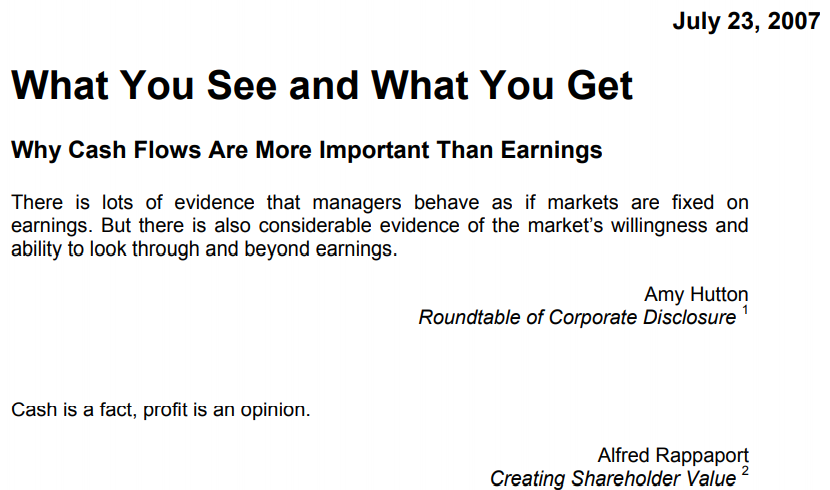
1/ If you decide to discuss "capital allocation" it is wise to first understand what it means: "converting inputs, including money, things, ideas, and people, into something more valuable than they would be otherwise." The test net present value based. research-doc.credit-suisse.com/docView?langua…
2/ "Passing the NPV test means $1 invested in a business is worth more than $1 in the market. This occurs when the present value of the long-term cash flow from an investment exceeds the initial cost."
"Capital allocation" isn't about income or wealth distribution. It's a skill.
"Capital allocation" isn't about income or wealth distribution. It's a skill.
3/ "In allocating Berkshire’s capital, we ask three questions: Should we keep the capital or pay it out to shareholders? If pay it out, then you have to decide whether to repurchase shares or issue a dividend.” Warren Buffett
4/ "To retain the capital, we have to answer the question: do we create more than $1 of value for every dollar we retain? Then we ask, what is the risk? We then only do the most intelligent thing we can find. The cost of a deal is relative to the cost of the second best deal.”
5/ Buffett believes many people don't have capital allocation skill because they didn't do it enough as they rose to positions where the skill is required.
Not letting Dairy Queen take $1 and invest it at lower return than elsewhere at Berkshire is capital allocation.
Not letting Dairy Queen take $1 and invest it at lower return than elsewhere at Berkshire is capital allocation.
6/ Basic research is underfunded by private firms because it is performed with no specific commercial applications in mind. That's why governments/philanthropy must fund it. By definition basic research is unwise capital allocation by the private firm. fgn.unisg.ch/-/media/dateie…
7/ Capital allocation is a skill. Where should each $1 of incremental capital go? Income/wealth distribution is different (an outcome, not a skill). Capital allocated to applied research produces feedback on an allocator's skill level. Measuring ROIC on basic research isn't easy.
• • •
Missing some Tweet in this thread? You can try to
force a refresh



